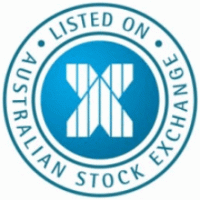
Chris Weston, Chief Market Strategist at IG Markets
For the first time in sometime traders are choosing to focus much more intently on their local economies. Asia is focusing predominantly on Asian issues, while Europe keeps a closer watch on developments in the Ukraine, and the US on the narrative from various Fed members. All the talk in Asia and Australia has been around the price of iron ore, copper and steel.
In the forex space, yesterday’s huge 111bp fix to the upside on USD/CNY was backed up today by a more modest 15 basis point move higher. It seems clear that the PBoC are going back to using the currency as a method for boosting exports, by putting purchasing power in foreign hands. Naturally this will not be well received by the likes of the US or Japan, as a weaker RMB will boost China’s exports at the expense of its competitors.
Iron ore futures traded over the Dalian exchange have stabilised to a degree today, however they are still down around 2%, as are steel futures. CME copper looks calmer as well, while Chinese equities are seeing better days after the mass liquidation that occurred yesterday, with gains in consumer stocks. However you have to have a strong stomach to be long these markets right now and if anything you have to respect the technicals and be short or have no position at all.
There is simply no clarity around the iron ore price right now, however I question whether yesterday’s 8% sell-off was a capitulation move. In the past, companies and traders would use copper as collateral to get financing from the shadow banking committee. However, given moves in China to clamp down on this practice (cash for copper), iron ore has taken over as the commodity of choice. One metre cubed of copper is as valuable as 180 metre cubed of iron ore; hence you can understand why inventories at China ports are at record levels right now given the levels of collateral needed. It has also been estimated that around 30% of all the iron ore of port inventory is there because of certain financing deals, where the commodity has been used as collateral to get funding. Much of the iron ore would have been purchased at higher levels and there would be significant pain on the move we’ve seen lower.
In fact, there would be many whose losses would have breached loan covenants and thus they would have had to forcibly sell. In saying that, there has been talk that many of the banks would have taken ownership of the iron ore and will look to sell when we see better levels, hence it seems logical that the upside is limited in the short-term.
Will the AUD/iron ore correlation return?
One of the other talking points is at what stage the AUD re-establishes its correlation with the iron ore price, especially if the commodity heads to the 2012 lows of $86.Unlike prior collapses in the iron ore price, such as last February, the market is much more au faux with the migration away from mining investment, and in turn, the push for greater domestic demand. This phenomenon seems to be supporting the AUD and if you look at the swaps market, take out the Fed and the RBNZ and the market still expects the RBA to be the most aggressive, with 13 basis points of rate hikes over the coming 12 months priced in.
Terms of trade do matter, especially given the importance iron ore plays into this, so at some stage we could see a greater correlation. In the forex space I am looking more favourable at EUR/AUD longs, although this week’s Australian employment report does pose a risk to this idea. Judging by the weak employment sub-component in today’s NAB business survey it appears this could favour my view though.
The EUR: a quasi-safe-haven
The EUR has once again become somewhat of a quasi-safe-haven and seems to be trading closer to Spanish and Italian spreads than that of the traditional German bund/US treasury relationship. EUR/USD has firmly broken above the downtrend drawn from the 2008 high at 1.3830, while the 61.8% retracement of the 2011 to 2012 sell-off at 1.3842 has also been broken and thus this should support the EUR versus other G10 pairs. EUR/GBP also looks good and has broken a multi-month bullish wedge, however there is huge resistance holding up play at 0.8350 (horizontal and Fibonacci resistance) and a break here could see 0.8500 come back into play. Comments yesterday from BoE member Charles Bean highlighted that while the BoE may be the first major central bank to hike rates, they are also fairly cognisant of the strength in the pound as a result of this.

European open calls look quite constructive and probably would have been provided some relief by the stabilisation not just in Asian indices, but the strong buying in Aussie banks and even iron ore plays, especially after a weaker open. The issues in China and Japan are a concern, however if you look at the VIX index, AUD/USD (one-month) option volatility or even credit markets such as credit default swaps over HSBC or Standard Chartered (two excellent proxies of China concerns), they are still very low and show absolutely no concerns whatsoever. If the likes of the S&P 500, DAX or IBEX are to see another 5-10 per cent correction then we are going to need to see these markets moving higher – rather quickly – however until that happens, developed market equities should find buyers on dips.